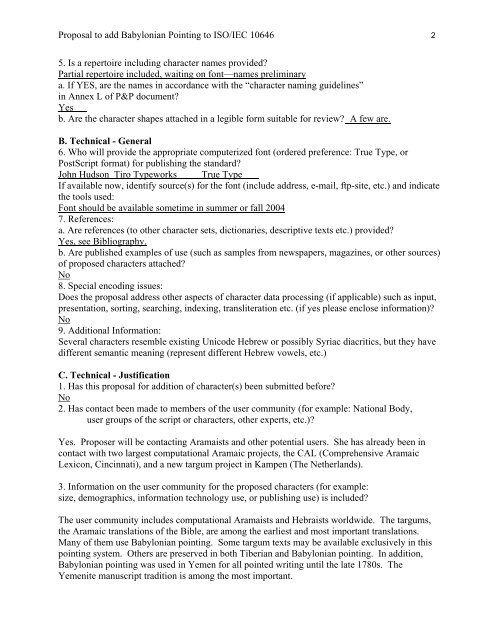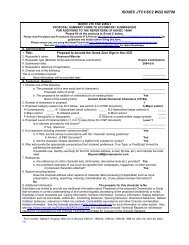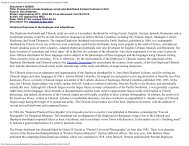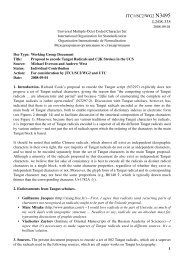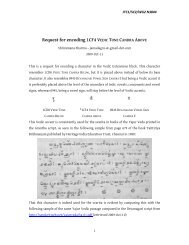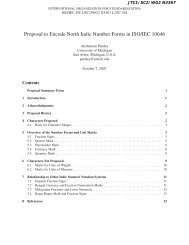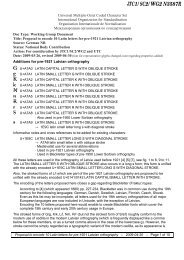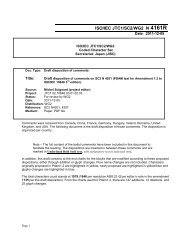JTC1/SC2/WG2 N2839 - DKUUG standardizing
JTC1/SC2/WG2 N2839 - DKUUG standardizing
JTC1/SC2/WG2 N2839 - DKUUG standardizing
Create successful ePaper yourself
Turn your PDF publications into a flip-book with our unique Google optimized e-Paper software.
Proposal to add Babylonian Pointing to ISO/IEC 10646 2<br />
5. Is a repertoire including character names provided?<br />
Partial repertoire included, waiting on font—names preliminary<br />
a. If YES, are the names in accordance with the “character naming guidelines”<br />
in Annex L of P&P document?<br />
Yes<br />
b. Are the character shapes attached in a legible form suitable for review? A few are.<br />
B. Technical - General<br />
6. Who will provide the appropriate computerized font (ordered preference: True Type, or<br />
PostScript format) for publishing the standard?<br />
John Hudson Tiro Typeworks True Type<br />
If available now, identify source(s) for the font (include address, e-mail, ftp-site, etc.) and indicate<br />
the tools used:<br />
Font should be available sometime in summer or fall 2004<br />
7. References:<br />
a. Are references (to other character sets, dictionaries, descriptive texts etc.) provided?<br />
Yes, see Bibliography.<br />
b. Are published examples of use (such as samples from newspapers, magazines, or other sources)<br />
of proposed characters attached?<br />
No<br />
8. Special encoding issues:<br />
Does the proposal address other aspects of character data processing (if applicable) such as input,<br />
presentation, sorting, searching, indexing, transliteration etc. (if yes please enclose information)?<br />
No<br />
9. Additional Information:<br />
Several characters resemble existing Unicode Hebrew or possibly Syriac diacritics, but they have<br />
different semantic meaning (represent different Hebrew vowels, etc.)<br />
C. Technical - Justification<br />
1. Has this proposal for addition of character(s) been submitted before?<br />
No<br />
2. Has contact been made to members of the user community (for example: National Body,<br />
user groups of the script or characters, other experts, etc.)?<br />
Yes. Proposer will be contacting Aramaists and other potential users. She has already been in<br />
contact with two largest computational Aramaic projects, the CAL (Comprehensive Aramaic<br />
Lexicon, Cincinnati), and a new targum project in Kampen (The Netherlands).<br />
3. Information on the user community for the proposed characters (for example:<br />
size, demographics, information technology use, or publishing use) is included?<br />
The user community includes computational Aramaists and Hebraists worldwide. The targums,<br />
the Aramaic translations of the Bible, are among the earliest and most important translations.<br />
Many of them use Babylonian pointing. Some targum texts may be available exclusively in this<br />
pointing system. Others are preserved in both Tiberian and Babylonian pointing. In addition,<br />
Babylonian pointing was used in Yemen for all pointed writing until the late 1780s. The<br />
Yemenite manuscript tradition is among the most important.


